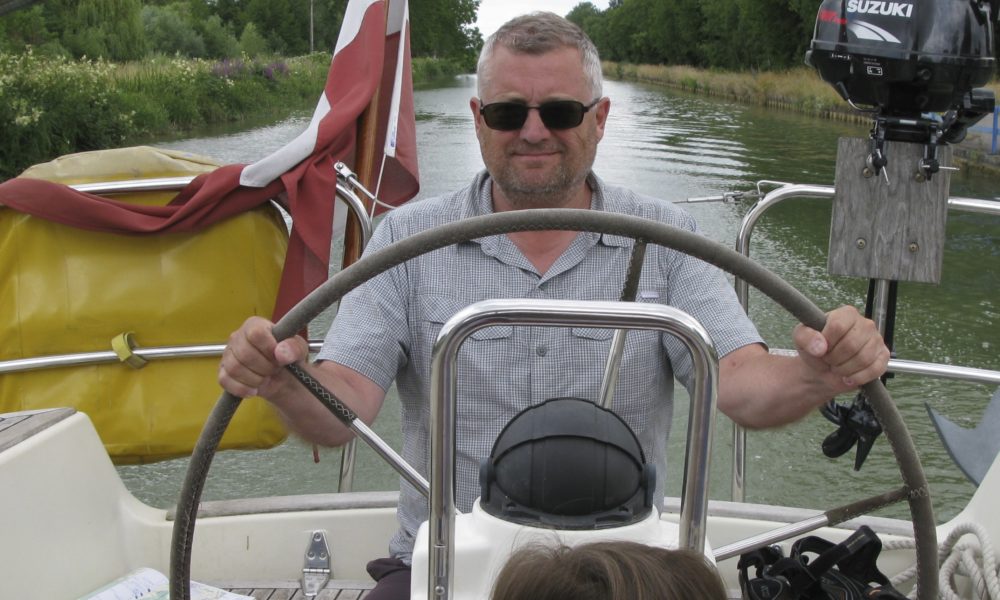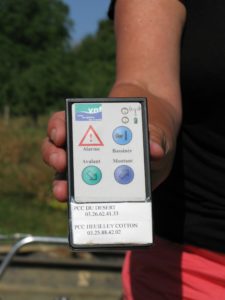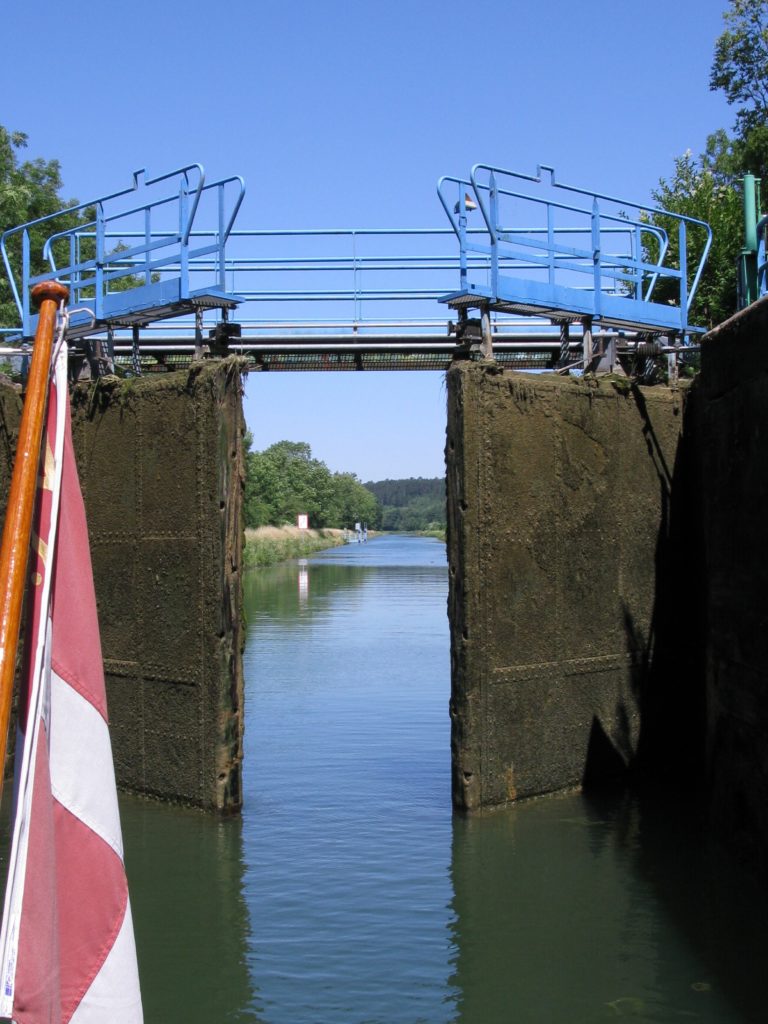The lock system and almighty VNF sets the speed. Not you…

48° 18′ 1.7748” N 5° 8′ 48.9516” E
July 13, 2015
We say goodbye to Lasse, Tianling and Nellie. They want to go to Alsace, Germany and Denmark to find the wildest playground for Nellie. Instead of making departing into something sad, Lasse told Nellie that they now will start a hunt for a wild playground, and this project she is very pleased about. In today’s first lock they stand and wait and surprise us with an extra goodbye.
It requires patience to sail the French channels. The channel is in control. The lock system and the almighty VNF decide. Not you. Others set the pace.
You may be very much accustomed to the ways things are done back home on the job. You make things happen. Putting things off. Monitor progress. Intervene and speed up if a project loses momentum. On the canal is different.
The locks are based on a centuries-old system, which in recent years has been partially automated, but which are nevertheless based on the same routines and procedures. First notify your lock – via VHF radio, via a mechanical turn on a hanging rod or via a remote control – that you want to get through the gate. Then the lock reports back, that it has received your message, and it will start working on it. After some time – it can feel like a very long time – closes the farthest gate, and the emptying or filling of water begins. It takes time.

Remote control for operating the modernised locks. All is in french. But anyway the system is simple
From your position you can see the water gushing out, or – if you are on the decline – pouring into the lock chamber. When the water in the lock chamber has reached the same height as your part of the channel, which takes quite a while, a beep will sound and a flashing light shows, that now starts next stage in the process. The lock opens the lock chamber. It goes slowly. Very slowly. With high probability is this slowness carefully thought of some engineering minds, who wanted to avoid accidental rapid movements. Slowly, slowly, the front gate goes up. You can go in and find your place in the chamber.
Here begins the next phase. You give the lock a message via a mechanical lift on a blue rod or with the borrowed remote. You want to have the lock emptied or filled with water. It thinks a little about this. Often you may provide an additional signal. Again, the system is put together, so it makes quiet movements, time for reflection, time to get out of the way, no panic, in french: “lentement, lentement…”
There are those, who will argue, that it is healthy for the average busy person. Well there are even those who would argue, that this enforced tardiness is the very idea of a sailing holiday. Here you will be subjected to nature and other forces greater than yourself. Here you must adapt your thinking and your pace to others. Down to speed. Accept that others set the pace.
We are not angels. But perhaps it is still part of what we call the holiday, to be forced into a very slow pace.
Log book: Today’s distance: 29 km. Sailed time 9:30 to 16:00 = 6 ½ hours. Locks: 15 pcs. Weather: Perhaps the best sailing weather we had. Slightly overcast skies. Warm without being oppressive.

Locks forces you to go down in speed. Everything takes place in slowmotion. Probably good for something. Stress, maybe?